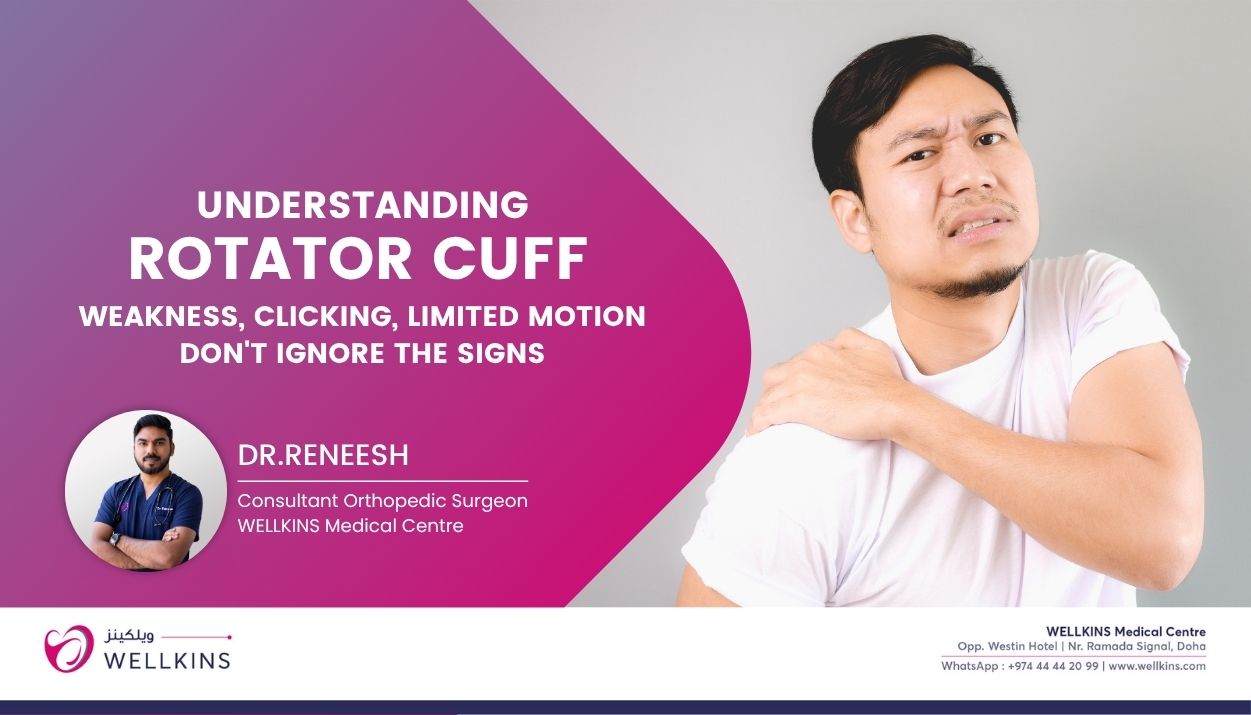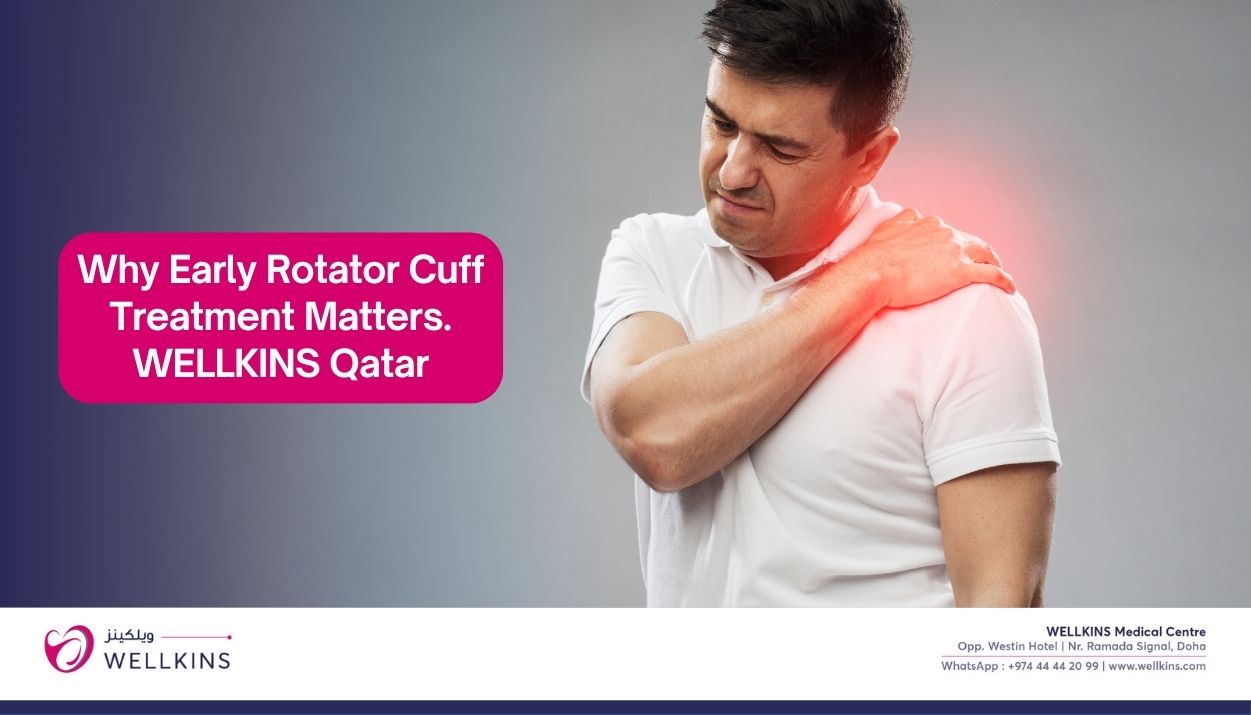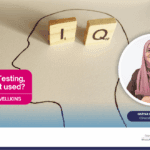Author: Dr.Reneesh (Consultant, Orthopedic Surgeon – WELLKINS Medical Centre)
Rotator cuff syndrome is a common shoulder disorder that affects millions of people worldwide, particularly those engaged in repetitive overhead activities or aging individuals. As an Orthopedic surgeon, I frequently encounter patients with shoulder pain and dysfunction caused by rotator cuff pathology. This blog will discuss the causes, symptoms, diagnosis, complications, and prognosis of rotator cuff syndrome to help patients understand their condition better.
As an orthopedic surgeon, I frequently manage Rotator Cuff injuries, which involve the inflammation or tears of the crucial tendons and muscles surrounding the shoulder joint. These injuries are often caused by repetitive arm motions, acute trauma, or age-related degeneration. This blog provides a detailed look at the causes, symptoms, diagnosis, potential complications, and long-term outlook for rotator cuff conditions.
What is the Rotator Cuff?
The rotator cuff is a group of four muscles and tendons that stabilize the shoulder joint and facilitate arm movements. These muscles include:
1. Supraspinatus (most commonly injured)
2. Infraspinatus
3. Teres minor
4. Subscapularis
Causes of Rotator Cuff Syndrome
Rotator cuff syndrome can result from:
1.Degenerative Changes (Most Common)
Age-related tendon wear and tear (especially after 40)
Reduced blood supply to tendons (hypovascularity of supraspinatus)
2.Acute Trauma
Falls, lifting heavy weights, or sudden jerking movements
3.Repetitive Overhead Activities
Sports (baseball, tennis, swimming)
Occupations (carpenters, painters, electricians)
4.Impingement Syndrome
Mechanical compression of tendons under the acromion
5.Poor Biomechanics & Muscle Imbalance
Weak scapular stabilizers leading to abnormal shoulder mechanics
 Symptoms of Rotator Cuff Syndrome
Symptoms of Rotator Cuff Syndrome
Patients typically present with:
✔ Pain (dull ache in the shoulder, worse at night)
✔ Weakness (difficulty lifting or rotating the arm)
✔ Limited Range of Motion (struggling with overhead activities
✔ Crepitus or Clicking Sensation (due to tendon inflammation)
✔ Pain Radiating to the Arm (referred pain pattern)
Note: Severe tears may cause inability to lift the arm (pseudoparalysis)
Diagnosis of Rotator Cuff Syndrome
As an orthopedic surgeon, I use a combination of:
1. Clinical Examination
Neer’s Test (impingement sign)
Hawkins-Kennedy Test (impingement)
Drop Arm Test (supraspinatus tear)
External Rotation Lag Sign (infraspinatus/teres minor tear)
2.Imaging Studies
X-rays (rule out arthritis, calcific tendinitis, acromial spurs)
Ultrasound (dynamic assessment of tendons)
MRI (gold standard for full-thickness tears and muscle atrophy)
If left untreated, rotator cuff syndrome can lead to:
*Progressive Tear Enlargement
*Muscle Atrophy & Fatty Infiltration (irreversible changes)
* Frozen Shoulder (Adhesive Capsulitis)
* Glenohumeral Osteoarthritis (Rotator Cuff Arthropathy)
*Chronic Pain & Disability
Prognosis: Can Rotator Cuff Syndrome Heal?
The prognosis depends on:
Size & Type of Tear (Partial vs. Full-thickness)
Patient’s Age & Activity Level
Timely Intervention
Non-surgical treatment ( NSAIDs, PRP injections, PT) works well for partial tears & tendinopathy.
Surgical repair (arthroscopic/mini-open) is recommended for full-thickness tears in active patients.
Post-op rehabilitation is crucial for restoring strength & function.
Rotator cuff syndrome is a leading cause of shoulder pain, but early diagnosis and proper treatment can prevent long-term complications. If you’re experiencing persistent shoulder pain, consult an Orthopedic specialist for a tailored treatment plan.
Read more about the orthopedic services at wellkins here: https://wellkins.com/orthopedics/




 Symptoms of Rotator Cuff Syndrome
Symptoms of Rotator Cuff Syndrome



